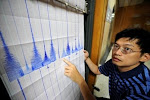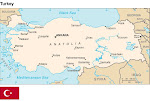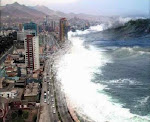 The remains of the Dongqi Middle School in Hanwang, China, which collapsed in the May 12 quake, killing at least 240 students.
The remains of the Dongqi Middle School in Hanwang, China, which collapsed in the May 12 quake, killing at least 240 students.BEIJING — A Chinese government committee said Thursday that a rush to build schools during the country’s recent economic boom might have led to shoddy construction that resulted in the deaths of thousands of students during a devastating earthquake in May.The statement by Ma Zongjin, the chairman of an official committee of experts assessing damage from the May 12 earthquake, is the first time that a representative of the Chinese government has acknowledged that poor construction may have led to the collapses. Until now, officials in Beijing and in southwest China’s Sichuan Province, which suffered the most damage, had said the sheer force of the 7.9-magnitude quake caused the collapses.The school collapses have become the most politically sensitive issue to emerge in the aftermath of the earthquake. This summer, grieving parents held street protests to challenge local governments and demand that officials conduct proper investigations into construction quality. Local officials felt so threatened by the parents that they ordered riot police to break up protests — officers even dragged away crying mothers — and offered the parents compensation money in exchange for them dropping their demands.
Many schools in the earthquake zone crumbled while buildings around them remained standing. According to some estimates, as many as 7,000 classrooms collapsed and up to 10,000 students may have died. In all, nearly 70,000 people died in the quake and 18,000 are considered missing; officials now say those still missing are almost certainly dead. The quake was the deadliest natural disaster in China in more than three decades.At a news conference in Beijing on Thursday, Mr. Ma said more than 1,000 schools suffered from at least one of two major problems: they were built on the fault line and collapsed like many other buildings around them, or they were poorly built.This second problem “is the construction quality of the building itself — its structure is not completely sound or its materials are not very strong, which is possible,” Mr. Ma said. “Recently, we’ve built school buildings relatively fast, so some construction problems might exist.”Mr. Ma also acknowledged how important the issue had become to the public, and said the government had sent 2,000 experts to the quake zone to examine the schools.“This is an issue people are paying attention to,” he said. “First, the parents of schoolchildren are paying a lot of attention, as well as education departments. And even people across the entire country are very much paying attention to this issue.”When the teams from the central government showed up in the quake zone, some local officials wanted to exaggerate to them the intensity of the earthquake so that poor construction or corruption would not be blamed for building collapses, Mr. Ma said. Some officials also wanted to report greater financial losses in their areas than what had actually occurred to get more aid money, he added.Shi Peijun, vice chairman of the earthquake committee, said at the news conference that the total direct financial loss from the earthquake was $123 billion.Mr. Ma did not give any further details on the findings of the experts or say when the government would release a final report. The purpose of the news conference was to update reporters on recovery efforts. Mr. Ma did not mention the school collapses until asked about them.It is well-known that construction firms and other companies often cut corners in China’s rapidly growing economy. But it is rare for government officials to admit to reporters not only that the problem exists, but that it could have fatal consequences, as Mr. Ma did. If properly conducted, further investigations into school construction could implicate local governments, which ordered up the buildings and are supposed to have inspectors who ensure compliance with codes. Some Chinese news organizations are once again taking a more aggressive approach to the issue of the school collapses, even though the central government ordered the news media to stop any such reporting. Xinhua, the state news agency, reported Mr. Ma’s comments on Thursday and said the large number of student deaths had “aroused wide suspicion and anger over shoddy construction and sub-standard materials allegedly used to build schools.”An article in the latest issue of Caijing, a news magazine that sometimes criticizes official views, questioned why the government had still not released a tally of the students who died in the quake.Mr. Shi said at the news conference that officials were still classifying the dead and that the final numbers would be released.
Many schools in the earthquake zone crumbled while buildings around them remained standing. According to some estimates, as many as 7,000 classrooms collapsed and up to 10,000 students may have died. In all, nearly 70,000 people died in the quake and 18,000 are considered missing; officials now say those still missing are almost certainly dead. The quake was the deadliest natural disaster in China in more than three decades.At a news conference in Beijing on Thursday, Mr. Ma said more than 1,000 schools suffered from at least one of two major problems: they were built on the fault line and collapsed like many other buildings around them, or they were poorly built.This second problem “is the construction quality of the building itself — its structure is not completely sound or its materials are not very strong, which is possible,” Mr. Ma said. “Recently, we’ve built school buildings relatively fast, so some construction problems might exist.”Mr. Ma also acknowledged how important the issue had become to the public, and said the government had sent 2,000 experts to the quake zone to examine the schools.“This is an issue people are paying attention to,” he said. “First, the parents of schoolchildren are paying a lot of attention, as well as education departments. And even people across the entire country are very much paying attention to this issue.”When the teams from the central government showed up in the quake zone, some local officials wanted to exaggerate to them the intensity of the earthquake so that poor construction or corruption would not be blamed for building collapses, Mr. Ma said. Some officials also wanted to report greater financial losses in their areas than what had actually occurred to get more aid money, he added.Shi Peijun, vice chairman of the earthquake committee, said at the news conference that the total direct financial loss from the earthquake was $123 billion.Mr. Ma did not give any further details on the findings of the experts or say when the government would release a final report. The purpose of the news conference was to update reporters on recovery efforts. Mr. Ma did not mention the school collapses until asked about them.It is well-known that construction firms and other companies often cut corners in China’s rapidly growing economy. But it is rare for government officials to admit to reporters not only that the problem exists, but that it could have fatal consequences, as Mr. Ma did. If properly conducted, further investigations into school construction could implicate local governments, which ordered up the buildings and are supposed to have inspectors who ensure compliance with codes. Some Chinese news organizations are once again taking a more aggressive approach to the issue of the school collapses, even though the central government ordered the news media to stop any such reporting. Xinhua, the state news agency, reported Mr. Ma’s comments on Thursday and said the large number of student deaths had “aroused wide suspicion and anger over shoddy construction and sub-standard materials allegedly used to build schools.”An article in the latest issue of Caijing, a news magazine that sometimes criticizes official views, questioned why the government had still not released a tally of the students who died in the quake.Mr. Shi said at the news conference that officials were still classifying the dead and that the final numbers would be released.
By EDWARD WONG
To read more go to:
As in the days of Noah....



















.jpg)


.bmp)
No comments:
Post a Comment